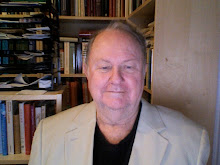Summary of Lecture Fourteen
The case of Marcel Proust merits attention. A seeming paradox is that, with all of his admiration for John Ruskin, he disregarded the central insight of the English thinker, that is, that societies and their art/architecture are organically linked. According to Ruskin good societies will produce good art and architecture; bad societies bad work. By most people's lights, the beau monde of turn-of-the-century France was a decadent society. From this supposedly repellent material, however, Proust wrested what many regard as the finest novel of the 20th century.
In fact, we have grounds for thinking that Ruskin's organic linkage is not valid, for ancient Egypt and the Roman Empire produced remarkable works, yet both were ruled by despots. Another counterexample, a contemporary one, is that New Zealand and Norway are generally accounted very fine places to live, but they do not seem to be producing notable art and architecture. Perhaps, we may hazard, a certain complexity--a mixture of good and bad--is required for happy creative results.
We also reexamined Proust's architectural metaphor (cathedral or church) for the structure of his great work. It would seem the height of hubris to challenge his testimony, but the comparisons of this kind take us only a little way. The reason is that the organizing principles of the arts of time (music, poetry, novels) are different from those of the arts of space (architecture, sculpture, and painting).
By way of a footnote, we examined Proust's enthusiasm for the "greatest painting in the world," Vermeer's "View of Delft." To Bergotte, his ideal writer, Proust ascribes a terminal illumination provoked by the little patch of yellow. We may assume that this tiny passage in Vermeer's painting played the role of a talisman for Proust also.
We turned then to the issue of primitivism. In art history we are familiar with one definition of this concept (though it has become controversial in recent years). "Primitivism" means, it seems, the inspiration that Picasso, Modigliani, and some German expressionists derived from tribal art (African and Oceanic).
However, the idea of primitivism has an older, and perhaps more interesting pedigree. The historians of ideas Arthur O. Lovejoy and George Boas have identified many passages from ancient Greek and Roman society, arguing that human history is not a record of progress but, instead, of devolution. According to one common scheme, we progress from the age of gold, to that of silver, then bronze, and finally iron (in which we now live). In these nostalgic evocations of past splendor, Lovejoy and Boas
distinguished between "soft primitivism" (an age of leisure based on abundance) and "hard primitivism" (in which scarcity shaped human endeavors, at the same time blocking the effects of luxury and decadence).
Such concepts underly the emergence, some 200 years ago, of the admiration for the Italian and French "primitive" artists. Artists such as Duccio, Cimabue, and the Van Eycks came to be seen with a new sympathy. It was felt that the design elements achieved in their works made them the equal, if not the superior of later artists.
Hence, at some point perhaps around 1520, art and culture "went off the rails." Our task is to return to those exemplary models, including those of the Middle Ages.
In fact, we have grounds for thinking that Ruskin's organic linkage is not valid, for ancient Egypt and the Roman Empire produced remarkable works, yet both were ruled by despots. Another counterexample, a contemporary one, is that New Zealand and Norway are generally accounted very fine places to live, but they do not seem to be producing notable art and architecture. Perhaps, we may hazard, a certain complexity--a mixture of good and bad--is required for happy creative results.
We also reexamined Proust's architectural metaphor (cathedral or church) for the structure of his great work. It would seem the height of hubris to challenge his testimony, but the comparisons of this kind take us only a little way. The reason is that the organizing principles of the arts of time (music, poetry, novels) are different from those of the arts of space (architecture, sculpture, and painting).
By way of a footnote, we examined Proust's enthusiasm for the "greatest painting in the world," Vermeer's "View of Delft." To Bergotte, his ideal writer, Proust ascribes a terminal illumination provoked by the little patch of yellow. We may assume that this tiny passage in Vermeer's painting played the role of a talisman for Proust also.
We turned then to the issue of primitivism. In art history we are familiar with one definition of this concept (though it has become controversial in recent years). "Primitivism" means, it seems, the inspiration that Picasso, Modigliani, and some German expressionists derived from tribal art (African and Oceanic).
However, the idea of primitivism has an older, and perhaps more interesting pedigree. The historians of ideas Arthur O. Lovejoy and George Boas have identified many passages from ancient Greek and Roman society, arguing that human history is not a record of progress but, instead, of devolution. According to one common scheme, we progress from the age of gold, to that of silver, then bronze, and finally iron (in which we now live). In these nostalgic evocations of past splendor, Lovejoy and Boas
distinguished between "soft primitivism" (an age of leisure based on abundance) and "hard primitivism" (in which scarcity shaped human endeavors, at the same time blocking the effects of luxury and decadence).
Such concepts underly the emergence, some 200 years ago, of the admiration for the Italian and French "primitive" artists. Artists such as Duccio, Cimabue, and the Van Eycks came to be seen with a new sympathy. It was felt that the design elements achieved in their works made them the equal, if not the superior of later artists.
Hence, at some point perhaps around 1520, art and culture "went off the rails." Our task is to return to those exemplary models, including those of the Middle Ages.
